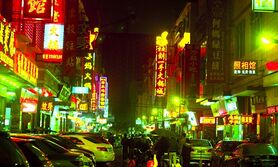Mirzak: Difference between revisions
mNo edit summary Tag: 2017 source edit |
|||
| Line 155: | Line 155: | ||
[[Category:Cities in Daxia]] | [[Category:Cities in Daxia]] | ||
[[Category:Cities]] | [[Category:Cities]] | ||
{{Template:Award winning article}} | |||
[[Category:2023 Award winning pages]] | |||
[[Category:IXWB]] | [[Category:IXWB]] | ||
Latest revision as of 15:00, 19 January 2024
Script error: The module returned a nil value. It is supposed to return an export table.
Mirzak | |
|---|---|
| Country | Daxia |
| Foundation | 432 BC |
| Government | |
| • Type | Special City |
| • Prefect | Hao Fard (PCD) |
| Area | |
| • Total | 21,900 km2 (8,450 sq mi) |
| • Land | 21,900 km2 (8,450 sq mi) |
| • Water | 4,000 km2 (1,500 sq mi) |
| Population (2025) | |
| • Total | 25,674,000 |
| • Density | 1,200/km2 (3,000/sq mi) |
Mirzak is the capital and largest city of the Democratic Republic of Daxia. With a total population within its metropolitan area standing at over twenty five million people, it is the largest urban agglomeration in Audonia and one of the largest in the world. Founded beside the Nianyu river, the city's sprawl has extended itself over both banks with numerous bridges across built over the years. The Mirzak Metropolitan Area is a special zone that is governed separately from Central Province. The specially appointed position of Prefect of Mirzak has vast administrative powers and resources at its disposal, making whoever holds the position one of the most powerful political figures in Daxia. The current prefect is Hao Fard, a Party stalwart who rose through the security organs and was appointed to run the city in 2025. Mirzak is home to the Chancellor's residence, the federal ministries, the People's Assembly, the Chamber of Productive Sectors and other legislative and administrative bodies. The capital is by far the wealthiest and most economically vibrant city in Daxia, the unrivaled economic engine of the country. Demographically it is home to various minority groups from all of Audonia and further abroad.
The city has existed under various names since at least 2100 BC, the oldest records available give it the name Laozun which means 'the old village'. The Yang dynasty renamed it to Zhongguang or the central expanse when it designated it as its new capital and from that point on the city became the seat of power of all Daxian dynasties that followed Yang. The fall of the Qian dynasty to the coup orchestrated by Dai Hanjian and Qiu Heng ocurred almost exclusively in the capital. The city was renamed once again during the presidency of Qiu Heng who thought Zhongguang was a name too reminiscent of the imperial era. The name of Mirzak was created by a supercomputer programmed by the National Institute of Robotics, the computer produced a line of binary code that translated to "Mirzak, ruler of cities". The supercomputer appeared to be attempting to communicate that Mirzak was its own name and that it intended to assume the governance of the capital and other cities. The supercomputer was shut down before it could enact any nefarious plans. When Qiu Heng was informed of the incident he thought it was auspicious and decided to rename the capital to Mirzak.
History
Foundation
Imperial Era
Republican Era
Administration
The city of Mirzak as the capital of the nation is governed differently from other cities. Mirzak is ruled by the specially appointed Prefect of Mirzak, an appointee of the Chancellor of the Republic. The Prefect does not answer politically to any legislative body nor to the citizens of the capital but solely to the office of the Chancellor. The Prefect has complete discretion to manage the cyclopean budget allocation the city receives and is usually considered to be the second most powerful post in Daxia].
Districts
Shangri-La district
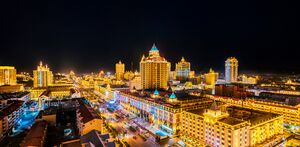
Shangri-La is a casino district located on the western outskirts of the capital. Originally a neighborhood for low class laborers the 2010's casino boom has radically transformed Shangri-La. Around one hundred large casinos and thousands of Abachinko parlors and gambling dens are currently in operation, employing over a third of Shangri-La's three million inhabitants; the hospitality sector is commensurately outsized to accommodate for all of the tourists visiting Shangri-La to gamble. The illumination from the casino lights is so strong that visitors to the district have sometimes reported temporary blindness and damaged retinas, something that has been collectively dubbed as the Manzhouli effect, after the main street of Shangri-La. Crime is a pressing concern in the district, the casinos and associated entertainment venues being a hive of scum and villainy where everything goes; from human trafficking and drug smuggling to racketeering, kidnappings and murder for hire. Shangri-La has gone through fourteen police chiefs in the last five years; a special Casino Police was created in 2022 to be a proximity force to keep an eye on gamblers. A large proportion of the city's Zorfashazim Jews live in the district, many of them operate gambling rooms; the Jewish Mob is also based in Manzhouli street. The Agudat Kol Shofar synagogue serves the religious needs of the community.
Kuaijing district
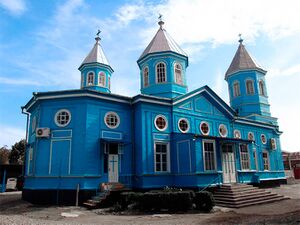
Kuaijing district also known as the Kiravix Quarter is located in the far northwest of the city. It is a medium to low income area with a significant Coscivian presence that according to the last census, hovers around 675,000 people. The origins of the Coscivian presence in Mirzak are poorly documented, it is believed the originators of the community were people kidnapped from Kiravian colonies like Sarolasta and Seváronsa during the Daxian Polynesian Wars. Imperial Qian authorities may originally have simply intended to use the abductees in land reclamation projects north of the capital but eventually simply abandoned them to their fate. Over time a slum grew organically that would form the nucleus of the modern district. Local Daxians called it Kuaijing for the Coscivians propensity to plant potatos (errūēln) and purple yam in every available area with any soil. Many local dishes are made with fermented potatos and pond fish; another famous dish among the district's poor is called Dośpax which is fried chicken scraps and bones usually scavenged from restaurant garbage bins. Most Coscivians in the district are adherents of the Coscivian Orthodox Church, being forced to practice it in secret until the relaxation of religious persecution in 2011 with the Law of Religious Bodies. Religious life is centered on the Coscivian Orthodox Church of Saint Ragmunihaśix, a small and rotting wooden building near the center of the district. Repeated requests to be allowed to renovate the church have been made to Directorate of Religious Affairs, all of which are invariably turned down.
Zongse district
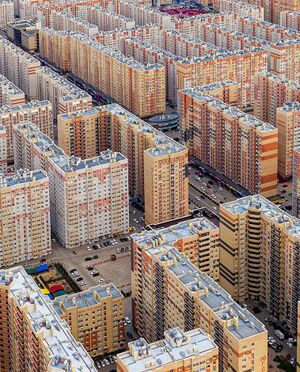
Zongse district also known in the past as the Swarthy Quarter for the presence of numerous Caphirians and Pelaxians during the height of commercial exchanges between the Qian dynasty and Sarpedon is a habitation district in the east of the capital near the industrial zones. Zongse was built during the late 1600's, originally consisting only of a set of large wooden barracks to house foreign traders, the district grew as more structures of distinct Sarpedonian architecture and flavor sprouted. Local Caphirians were even granted permission to dedicate a stele in the Zongse central market to Imperator Perfidax who granted them monetary subsidies; the stele is now considered definitely lost. At its height almost a third of the district's population were foreigners until the Pogrom of the Caphirians in 1758 were most of them were killed and the majority of the wooden structures burned down by the rampaging mobs.
Today most of the old historic buildings have been completely razed, replaced by hundreds of space effective vertical habitats that serve to house hundreds of thousands of workers who commute to the neighboring Zaibac Refinery City. Zongse is almost exclusively a housing district with the monotone white and brown apartment buildings only broken up by the occasional park or playground and a multitude of above ground and underground parking lots. Zongse has one of the highest rates of suicide among all Mirzak's districts.
Alcoholism especially overconsumption of Slozo is rampant, to the point that city authorities periodically declare Zongse a dry district; all alcohol shipments are then forced to traverse alternate routes through the city to avoid Zongse. Due to its vast reserves of impoverished and malnourished blue collar workers, Zongse is also used as a testing laboratory by food giant Agario for its new product lines, for example the concept of the Factory Gruel was perfected during a series of tests carried out with Zongse residents who proved receptive to the mysterious grey curds.
Zaibac district

Zaibac or Zaibac Refinery City is one of Mirzak's sprawling industrial districts located east of the city center. Zaibac is adjacent to the vast housing tenements of Zongse district where most of its workforce lives. Zaibac houses a variety of facilities including oil refineries that pump out gasoline and diesel oil, natural gas processing plants, Iron refinery complexes to treat pig iron and metal refineries for copper, zinc, nickel and tungsten. The densely packed industrial operations release enormous amounts of pollutants into the air; Zaibac is the most polluted district of the capital and face masks ordinances are permanently in place. Many of the industrial operations in Zaibac are geared directly to feeding energy to the city's electricity grid, making the district the beating heart of Mirzak. Zaibac is one of several planned industrial districts that were originally established in the outskirts of the capital during the 1930's and 1940's; the city's ungainly expansion resulted in these industrial zones being absorbed by the city within a few decades. The established synergies already in place between the Zaibac district and Zongse housing district made it unfeasible to relocate the industry already there. Further heavy industry near the capital was planned after Zaibac, developed into the likes of Sheik Monaq Industrial City and the Cooking Oil Recycling Free Zone.
Government Quarter
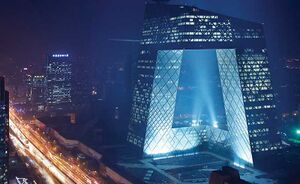
The Government Quarter also called the Central Fortress and the Grey Zone is the heavily fortified district housing all of the central installations of the Daxian government, it is also the seat of power of the Party of Daxian Democrats. It covers an area of fifty square kilometers, it is surrounded by three separate rings of 8-meter high walls of reinforced, blast proof concrete equipped with fortified watchtowers, barbed wire, sensors, thermal cameras, drone surveillance round the clock and remote controlled machine gun nests. Entry points are few and are all guarded by members of the Bureau of State Protection, these forces also have access to anti-air batteries, anti-tank weaponry and anti personnel vehicles. There are vast underground tunnel complexes with reinforced bunkers, warrens and redoubts that may extend as much as one kilometer underground; none of which are accessible to the public but are for the exclusive use of the country's leadership. A majority of the administrative and security staff of the Quarter live within its walls, it is designed to be a city within a city with its own separate metro and monorail lines, emergency energy reactors and autonomous food supply. Daxia's ultra rich pay exorbitant prices to be able to live in the Central Fortress, not to mention extremely hard to pass security clearances.
Little Abaza
Little Abaza also known as Kakunia is a suburb populated by the city's Sugondese, an ethnic group originally native to north Crona. After the destruction of the Kingdom of Abaza in the 18th century, the surviving Sugondese population was brought over to Daxia by slavers. The Sugondese were use as laborers in nearly every large public construction project commissioned by the Qian authorities from the 18th century onwards be it palaces, administrative buildings, roads, canals and fortifications. Association in the Daxian psyche of Sugondese and manual labor became so intrinsically linked that even today foreign manual laborers are referred to as Kakun, which is a Daxian slur for dark skinned peoples. Naturally over time this Sugondese people had to be housed somewhere that was conveniently close to the never ending construction sites in the capital. Authorities designated a site south of the city to settle the Sugondese under official supervision. The Sugondese called their makeshift neighborhood Little Abaza in honor of their lost homeland. As the urban sprawl spread in all directions Little Abaza was eventually swallowed by the city and by design or due to a bureaucratic oversight, Little Abaza was not destroyed. Today the suburb is home to several hundred thousand Sugondese and is the heart of the community in the country, Sugondese are recognized as entrepreneurial and hard workers. Little Abaza is host to many small businesses such as hair salons, flea markets, small eateries of Sugondese food and repair shops; on the main authorities do not interfere with these self employed people.
Demographics
The latest census gives Mirzak a population of 25,674,154 of which 12,323,593 are male and 13,350,560 are female. The average age of Mirzak residents is 42.3. The current birth rate in Castra Mirzak is 5.29 births per 1,000 inhabitants. Being a global city, Mirzak is ethnically more diverse than other Daxian cities both for its position as a place of trade and economic activity and for its past as an imperial center. Some twenty percent (roughly equivalent to some 5.2 million) of the city's inhabitants are of non-Daxian origin, with important communities of Muslims from Rusana, imported north Cronans indentured servants, Jews, abducted Coscivians and more recent economic migrants from Polynesia. The most recent census distributes the different ethnic groups as follows: Daxian (79.5%), Rusani (6.6%), Jews (4.5%), Cronan (4.1%), Coscivian (2.7%) and Polynesian (2.6%). Mixing between ethnic groups is societally frowned upon so every group tends to live apart in its own separate ethnic clusters.
While the Daxian population of the capital is reputed to be more open to foreign cultures, there are still powerful undercurrents of historical xenophobia. Previous foreign-born communities such as the Caphirians and Pelaxians were forced out in the late 18th century after the Pogrom of the Caphirians and that historic distrust of outsiders moving in remains strong in many sectors of the capital. Public demands for the forced acculturation of minorities continue to surface periodically. Neighborhoods populated by Cronan or Polynesian peoples are more akin to underclass ghettos neglected by the city and often with only intermittent access to public services. The Jews and the Rusani do fare better in great part thanks to their long association and interaction with Daxia, "as long as they remember their place" a proper Daxian would say. Despite some public protests, the city administration has long mulled over the prospect of petitioning to the central government for a loosening of the restriction on foreigners residing in the country to boost economic growth by attracting highly educated or wealthy individuals to Mirzak. Currently qualifying aliens can only reside in the country continuously for a period of up to six months, the city's proposal would see that period extended to a ceiling of five years if a foreigner has made significant investments in the city(the amounts required to qualify as 'significant' have not been publicly disclosed).
Education
Crime
Being the largest and wealthiest city in Audonia, the capital city is beset by all manner of criminal elements despite being also the most surveilled city in the planet. The sheer size of the city makes it impossible to cover every meter or safeguard every citizen. Mirzak is home to a bustling and sophisticated criminal underworld that engages in myriad illegal activities. The National Opium Syndicate is known to maintain a large presence in the city, using it as a central hub for production and distribution of narcotics. They also are suspected of owning large stakes in casinos in the Shangri-La district with associated loan sharking and violent enforcement operations. Mirzak is also a center of white collar crime given its status as a large financial center. The Zheng He financial district has been the focus by authorities of several high profile investigations on large ponzi schemes and investor fraud.
Economy
Infrastructure
Transportation
Mirzak Automated Monorail System
Quality of life
Mirzak Cheese Vaults
Screaming booths
After a near epidemic of stabbings, road rage incidents and fights at convenience stores and fast food joints the city administration began the installation of 'screaming booths' as part of a campaign to help people decompress in a non violent way. The screaming booth consists of a repurposed telephone booth in which the glass panes have been replaced by dark panels to obscure vision and the interior is cushioned. Citizens at risk of mentally breaking at the seams can enter any publicly available booth and simply release themselves through screaming and banging at the walls. Public officials credit screaming booths with a reduction of 7.4% in the incidence of public rampages and violent non-lethal fights.
Culture
Life in modern Mirzak has been variously described by locals and visitors as 'hellish', 'fast paced' and 'extremely unforgiving'. Exiled human rights advocate Chang De-Wong described the city as 'Daxia's heart of darkness, both a relic of a brutal imperial past and a nightmarish vision of a future where freedom, virtue and human dignity are snuffed out by an ever growing police state'. The city's sheer scale and terrible wealth inequality seems to activate what many sociologists have called the 'callous gene', in which the inhabitants of a large metropolis intent on surviving their daily lives grow ever more selfish and cold towards other people. The capital of Daxiais a city of great contrast, from gratuitous displays of obscene wealth separated from cramped shanty towns by as little as two city blocks to racist harangues against foreigners broadcast from makeshift megaphones competing for the ears of passerby with the call to prayer of a mosque; the city is a great laboratory of what the rest of Daxia might look in the following decades if it continues to open up.
Mirzak is home to a treasure trove of museums, performing arts venues and historical buildings
Cuisine

Mirzak is renowned for its wide range of culinary offers ranging from what is termed 'High Daxian' cuisine to the most vile foods such as quasi edible corpse starch and worm gruel. The middle and high income classes have access to imported produce and international fast food brands while the vast underclasses survive on recycled food and Agario staples such as the mud cookie and aspic. One of the city's most eclectic offerings is its 'Blue Milk'. The creation of blue milk harkens back to a marketing campaign by Mirzak Dairy to transform cow milk into a luxury food, the first idea was to give it a 'classier' hue such as light blue. To achieve this without colorants the company undertook in genetic tampering of batches of cows until a creamier and more importantly blue milk was produced. Blue milk has the same uses as regular milk but is many times more expensive and is only seen in upscale restaurants.
Another culinary practice of Mirzak is the consumption of the common green crab which is widely considered to be an invasive species. Green crab is common in Daxia's eastern shores where it is thought to have arrived from after migrating from western Crona; the species is not as popular there due to its depletion of the local mollusk population. Mirzak's green crabs are used extensively in soups and sauces, buttered green crab legs are a popular and inexpensive street food that can be found literally every few blocks. The decadent upper crust of the city enjoy green crab meat with flakes of gold and seasoned with expensive spices. Another staple of the lower class diet is the aspic which was invented in Mirzak's very own Central state penitentiary. It is very common for low income families to have vats to make the gelatinous treats in their backyards of bathrooms, a practice that Agario's vast legal team is constantly on the lookout for and combats wherever it is detected.
Tourism
Landmarks
city idea repository
biggest black pop in alshar, blacks from audonia brought to work in pharaonic construction projects. live in massive shanty towns/hive cities/ugly blocky cramped skyscrapers like that dusty cake slice building in hong kong
